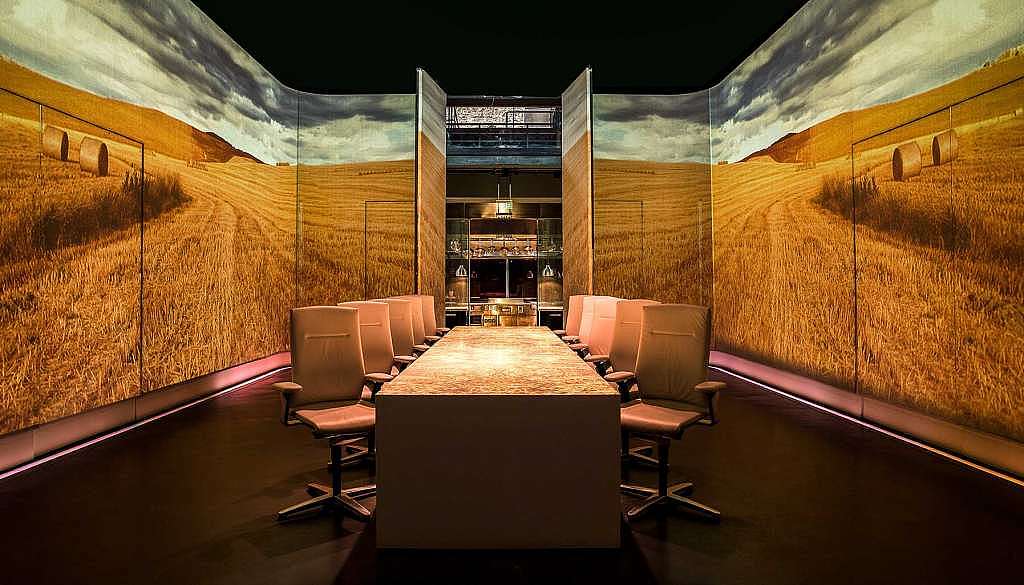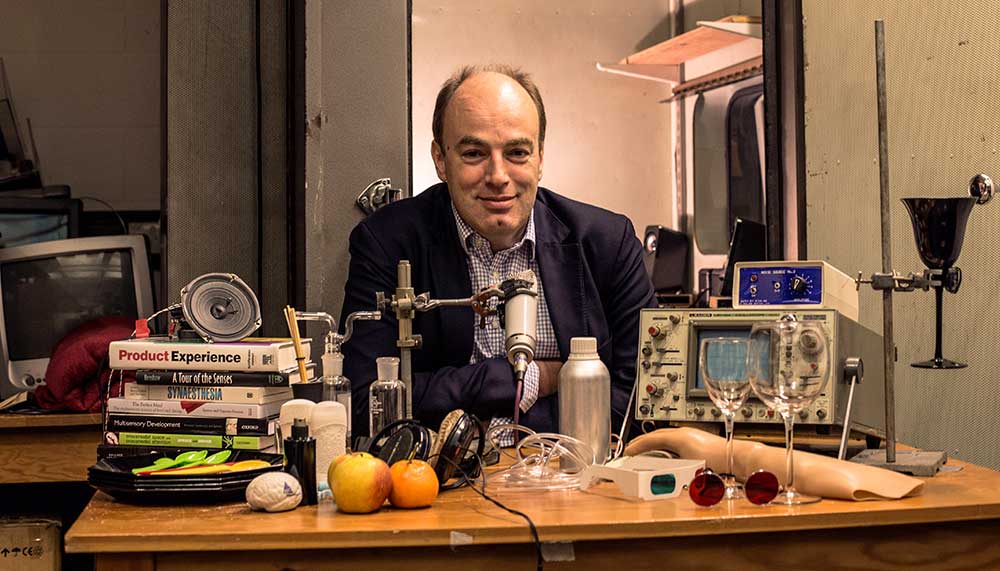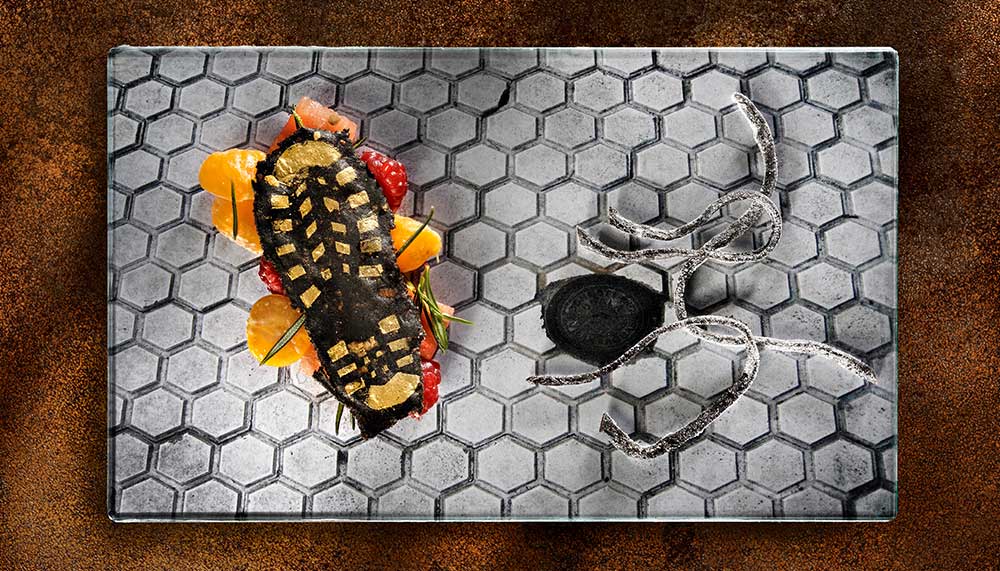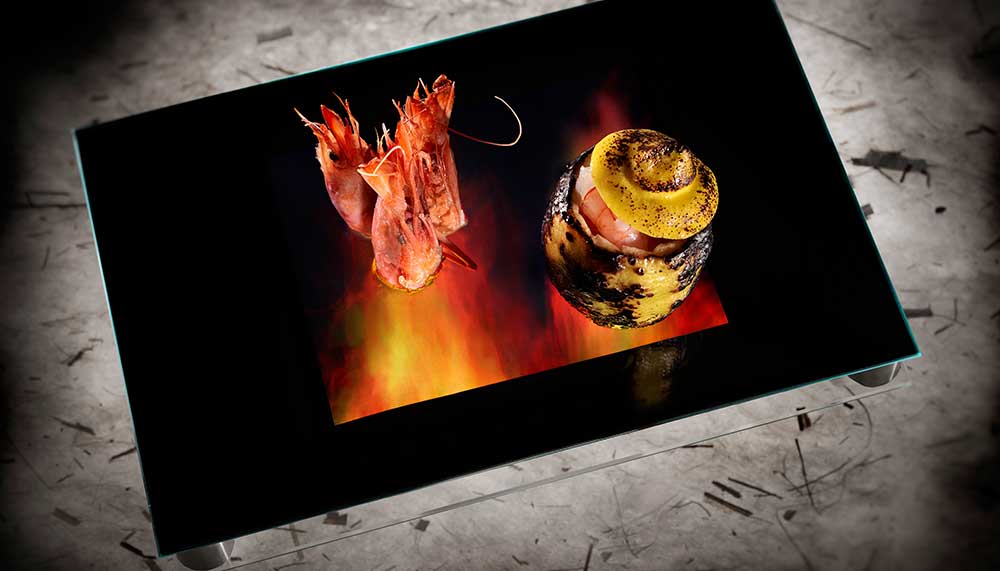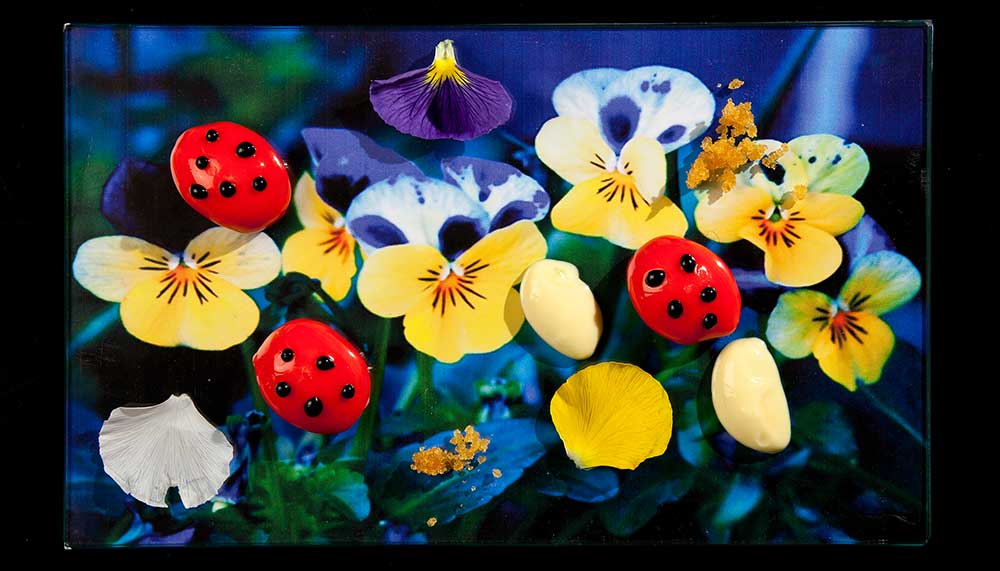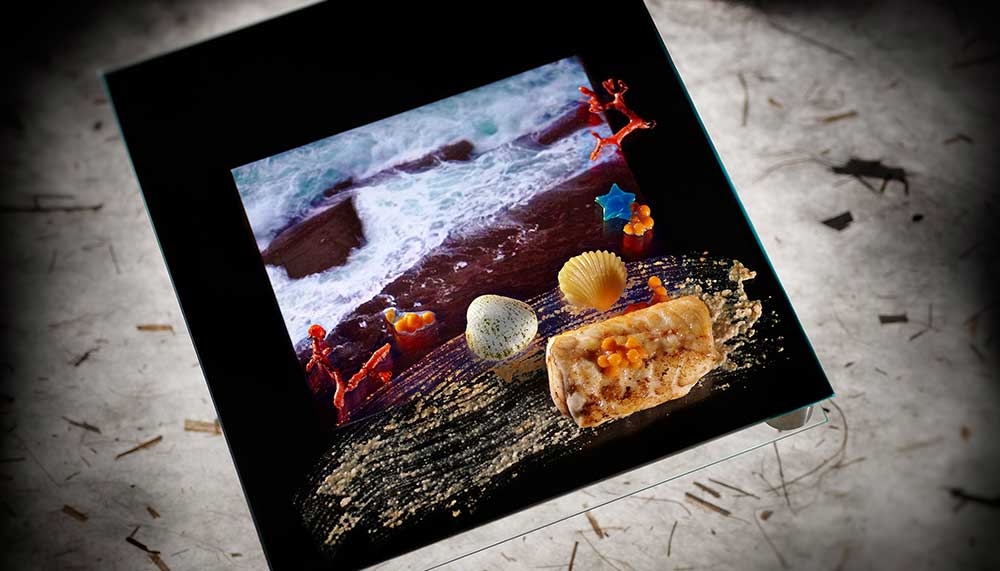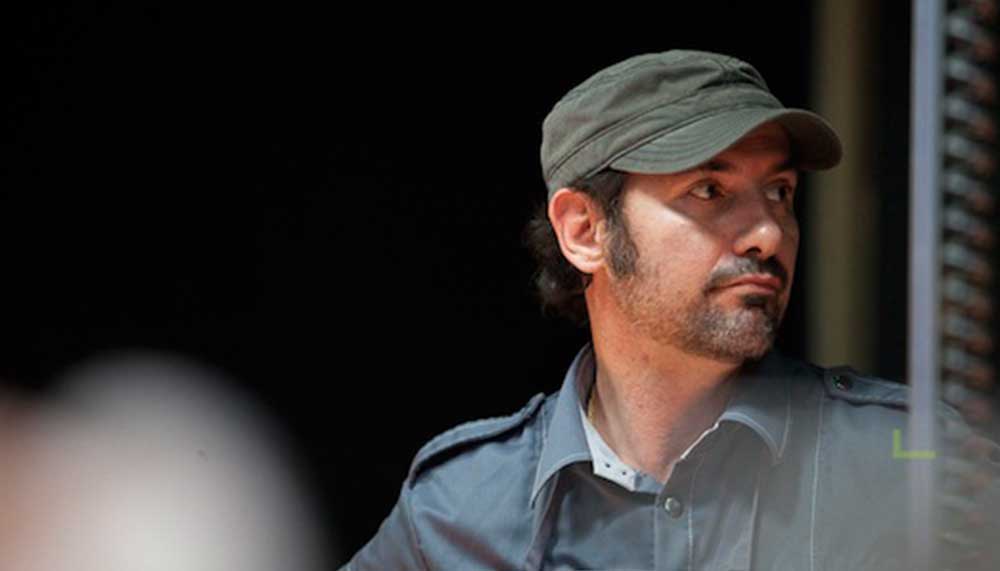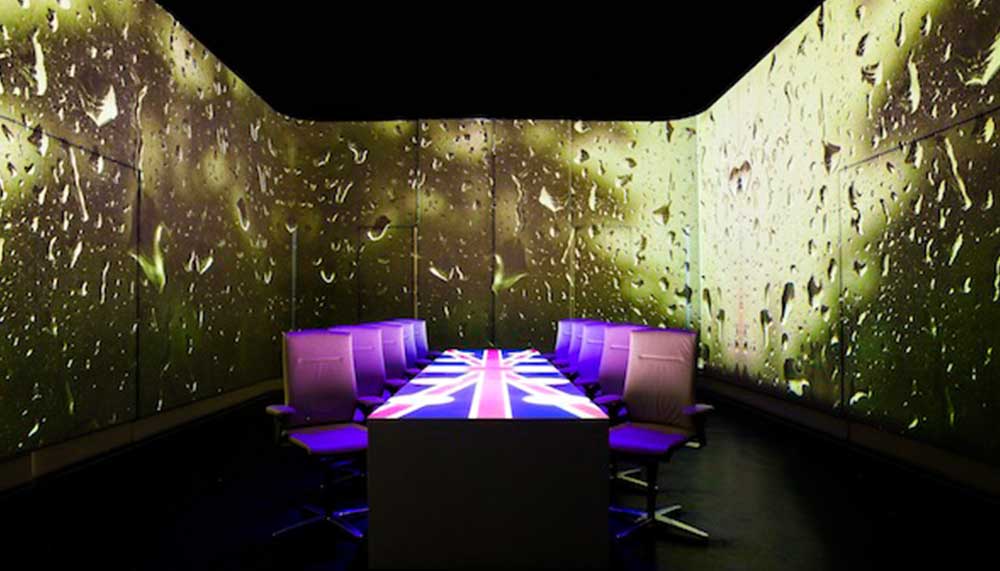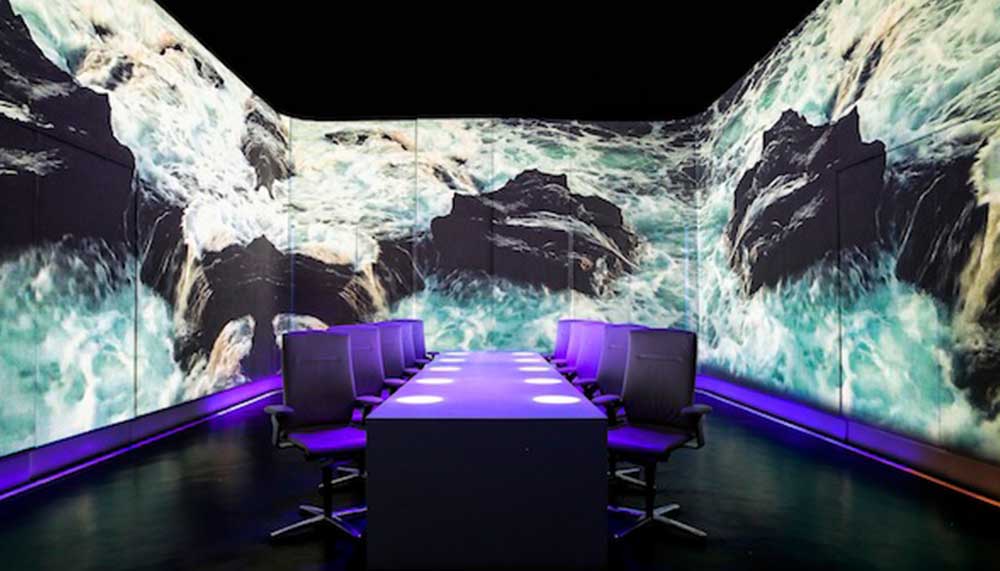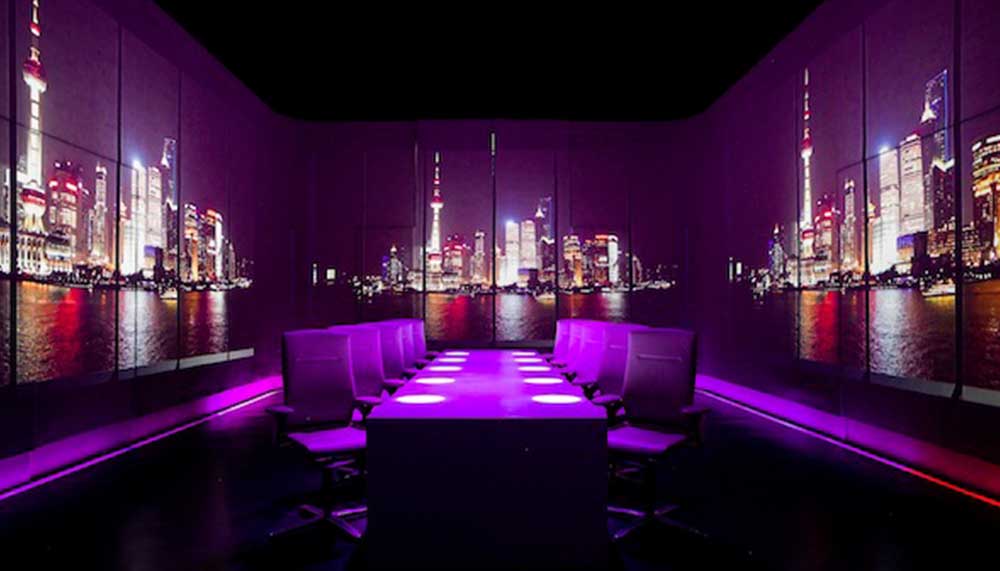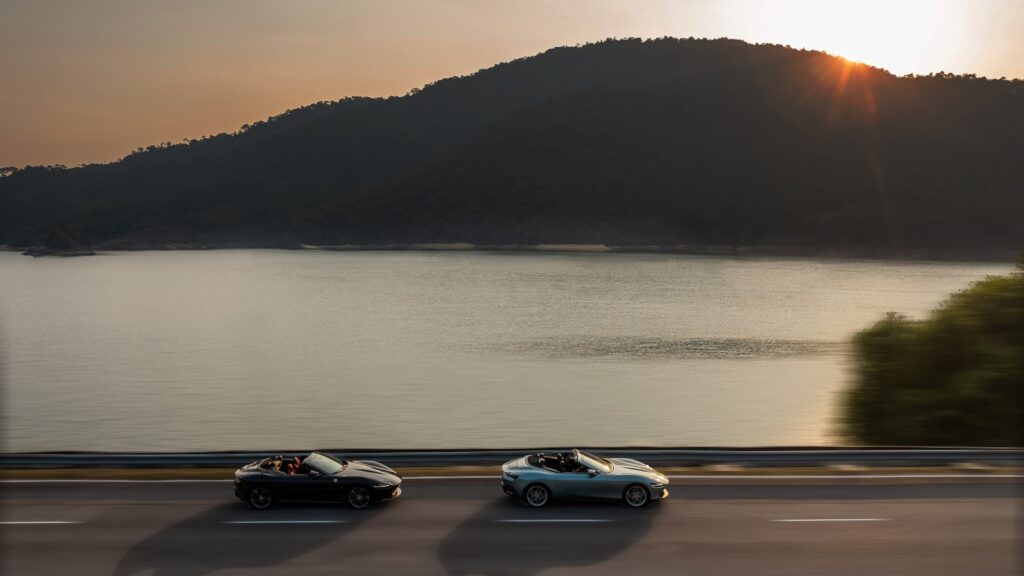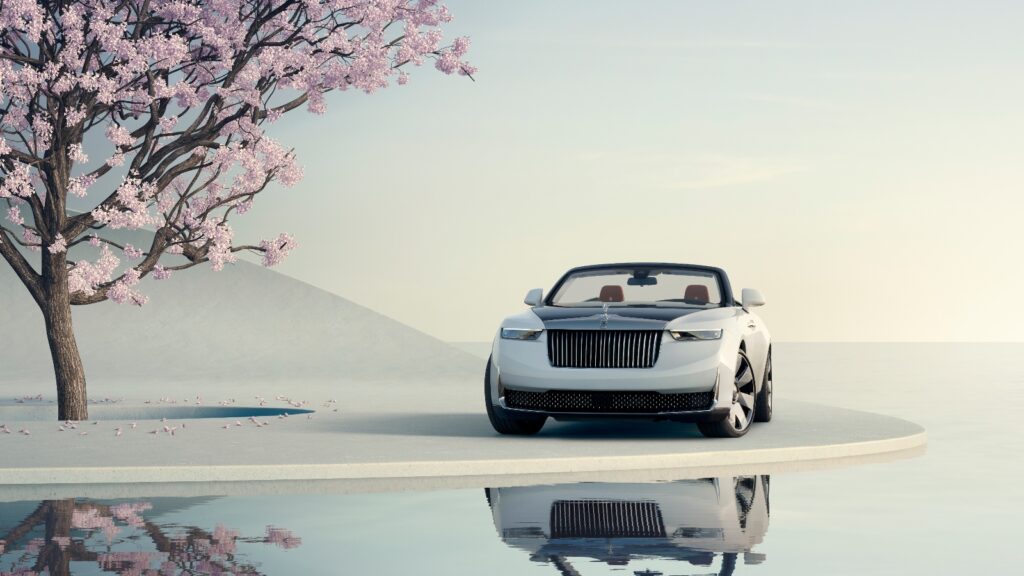Features beyond just food
Are you sitting comfortably? Then let dinner commence. Except the latest way of enjoying a meal is a multi-sensory experience where sound, aroma, texture, and even the crockery feed into all our senses and enhance the overall pleasure and memory. What’s more, there’s scientific evidence to prove that such ‘psycho taste’ impacts our brain and affects our perception of flavour, increasing its efficacy by up to 20%. Professor Charles Spence is Head of the Crossmodal Research Lab in the Department of Experimental Psychology at Oxford University and author of The Perfect Meal. His work with chefs from Heston Blumenthal of The Fat Duck (remember the ground-breaking Sounds of the Sea which first brought iPods to the dining table) to Jozef Youssef of Kitchen Theory is making waves, often literally.
Professor Spence’s research shows that our brains process all manner of sensory inputs together in a process known as Crossmodal Sensory Perception. So what we see, hear, smell and touch impacts our experience of taste beyond what we would previously have imagined.
“We’re playing with inputs from other senses to create a magical moment,” says Jean Roca, head chef of El Celler de Can Roca, Number One in the World’s 50 Best Restaurants. They recently took a ‘gastronomic opera’ on tour where images were projected against the walls and ceiling, and specially-composed music accompanied the dishes. Back at the restaurant, they play a commentary of Barcelona football star Messi scoring a winning goal against Madrid whilst serving a dessert on artificial grass perfumed with real grass. Diners need to manoeuvre the chocolate ball past the meringues and eat them to score – guests report feeling transported to the thrill of the match and find the dish incredibly satisfying.
Most extreme is the thrill of dining at Ultraviolet by Paul Pairet in Shanghai, where shifting images are projected onto the blank walls of the dining room and table itself. Music matches each scenario in this exclusive transporting dining experience, with just one table for ten people. Behind the scenes there are 8.5 miles of cables, 36 speakers and 7 projectors augmenting the kitchen kit. Dinner starts dramatically with an apple wasabi palate cleansing ‘wake up’ sorbet, frozen and cut into wafers. A Gothic abbey appear on the walls, the air is filled with holy incense and ACDC Hell’s Bells Rock ‘N’ Roll assaults the ears. Very much like being initiated into a cult.
Two different lobster dishes are served: lobster poached in sea water is accompanied by projections of fierce waves and crashing sounds to recreate the scene of fishermen cooking at sea, whilst a grilled lobster dish is joined by calm images of a beach in Bali.
There’s plenty of humour too. Fish and chips encapsulated in an over-sized battered caper filled with anchovy tartar is served with huge rain drops lighting up the walls and the drumming of the rain. A Union Jack appears to drape the table and The Beatles’ Obladi-oblada plays.
The last dessert, a homage to Pierre Herme’s famous lychee, rose, raspberry macaron, is called Ispahan Dishwash. It appears to be a messy tray covered with soap foam waiting to be cleared up, and features all kinds of texture combinations from meringues to macarons and lychee foam. The dish is brought to life with visuals of washing up and Edith Piaf’s La Vie en Rose filling the air.
Classically trained Paul Pairet is pragmatic. “Without the constraints of à la carte I can be in complete control and arrange a scenario around each dish.” He wants to create the best possible setting by “extending the plate into the atmosphere”. The idea is that “diners are ‘tasting’ through the external triggers before they bite in, feeding their brain and imagination. I am not telling them what to think, merely leading them down a path. It makes the food itself matter even more; it gives more power to the dish and strengthens the memory enormously.”
Simpler still Eleven Madison Park in New York serve their cheese course in a picnic basket with plates made of ceramic that imitate paper plates. Thrilled diners report that they feel as if they are properly at a picnic whilst still in the restaurant.
At Arzak in San Sebastian, certain dishes are served over a digital tablet: grilled lemons with shrimps and patchouli sit atop a fired-up grill with the noise of crackling flames. Explains Elena: “we experimented with serving the dish on and off the tablet and diners always said that having the image and the sound intensified the flavours of the dish and made it even more enjoyable. We’re keen to use new technology to further augment the meal, there’s huge potential to experiment.”
Jozef Youssef of Kitchen Theory works closely with Professor Spence and puts many of his theories to test on diners. Their experiments have shown that high pitched sounds make ingredients taste sweeter and lower tones more bitter. Even a soup can have striking impact when given extra aroma stimulation. The Sight and Sound of Flavour white miso veloute, langoustine, hazelnut butter, saffron is served with an atomiser of saffronelle. Diners are asked to identify the aroma and seek it out in the saffron within the dish which hugely enhances its enjoyment .
What next? Professor Spence predicts alongside greater digital technology more theatricalisation of service even the introduction of old-fashioned story-telling and playing with the weight, materials and textures of cutlery. Listen out for the clash of spoons.
